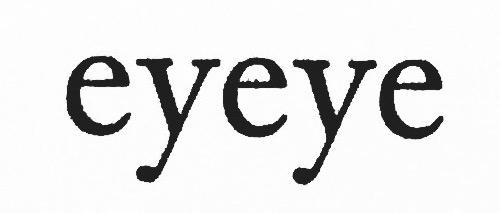Play and Imagination: On the One-Word Poem
The process of writing a one-word poem on the page involves playfulness, along with the willingness to take risks with imagination—much like a toddler who scribbles letters for the first time on paper, using the crayon to draw what a word might look like, and creating language outside the boundaries of standard writing. In a way, to think like a child who is creating his first word on paper is to engage in a true act of writing. Because to write means to link the brain, the eyes, the hands simultaneously: it’s that coordination of the poet’s artistic vision and creative action, which can reveal a word’s identity through its image. In that moment, the poet writes mum in cursive and watches its shape flow like a wave across the page, or gig, to notice how the lower loop of g shapes itself into an earlobe. Through this practice, the poet guides his hand through a graphological meditation which then becomes an artistic mediation between self and page. This is when he reimagines language, reimagines the relationship of writing and experience to move toward a literary moment. Much like that moment when discovering a new word like “nefelibata,” that feeling of surprise and curiosity one has toward its spelling and meaning.
Let’s look at a one-word poem that is meant to be seen rather than read, a poem that’s meant to be viewed as image rather than text. In the poem “eye” by Aram Saroyan, he adds an additional “y” and “e” to the word to enact a sense of play and inventiveness. And in a way by adding extra letters the word visually becomes what it means:

At first glance this one-word poem appears disorienting; it takes a second for our eyes to adjust to it. Perhaps it’s because as viewers the extra y and e skew our perception a little. So we find ourselves scanning the word back and forth as if in a REM (Rapid Eye Movement) state. But what makes this poem effective too is its play on a palindrome. A palindrome is a word or sentence that reads the same forward and backward. Some examples are “toot,” “minim,” “never odd or even,” or “draw o coward.” In his one-word poem, Saroyan gets us to understand his interaction with language. His use of a palindrome gets us, as readers, to look closely at language, to literally eye the word, but then he adds those extra letters and suddenly the poem becomes visible as an image. In Ian Daly’s essay, “You Call That Poetry?!” Saroyan says, “I got intrigued by the look of individual words; the word ‘guarantee,’ for instance, looks to me a bit like a South American insect.” The one-word poem gets us to think about the word as picture and reminds us, as poets, that to develop the mind’s eye we must open ourselves up to seeing language and to feel the energy of a letter. The origin of the A, for example, derives from a pictogram dating back to the 11th century in the Middle East. The A is an ox-head, and if you rotate it until its stems point upward you will see the ox’s muzzle in the area between the apex and crossbar. Once we are aware that the letter is a picture, it’s up to us, as writers, to imagine the ox ploughing the field of the page, getting it ready for us to plant and expand our imagination.
Poet Orlando White is from Tólikan, Arizona. He is Diné of the Naaneesht’ézhi Tábaahí and born for the…
Read Full Biography

